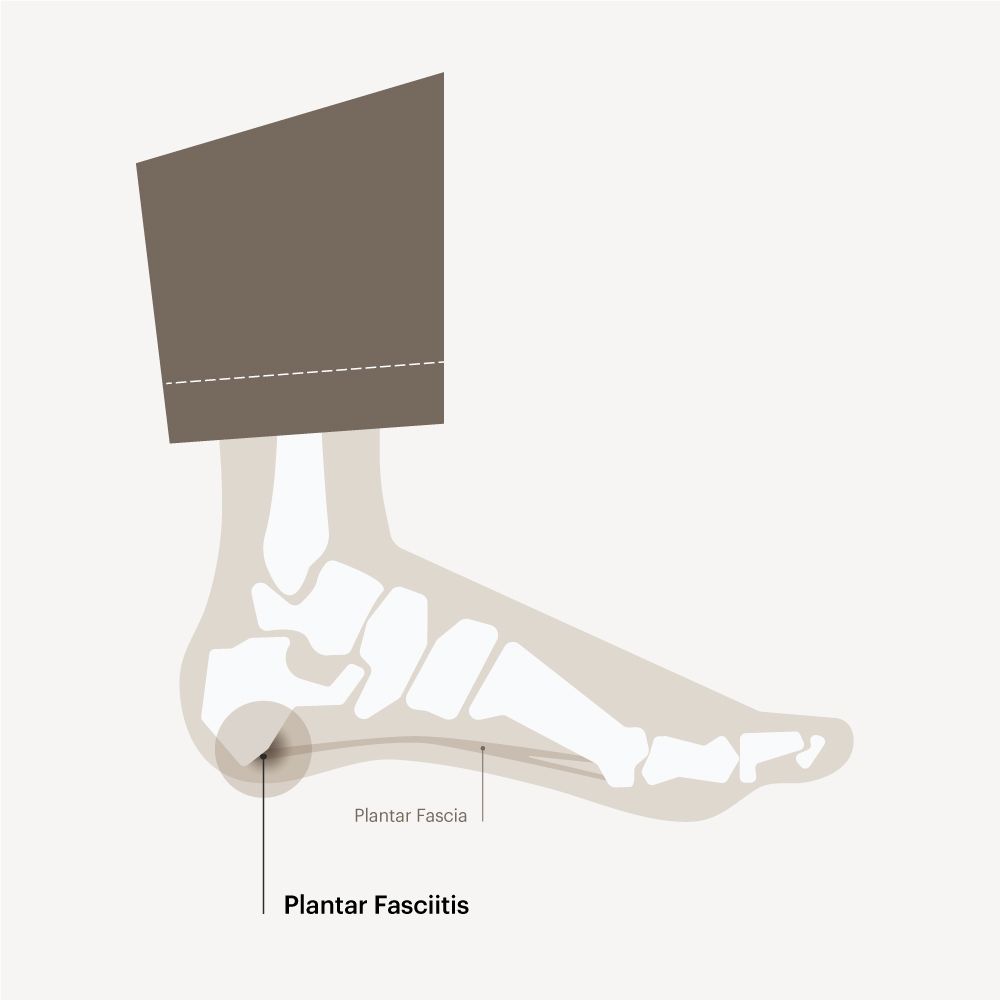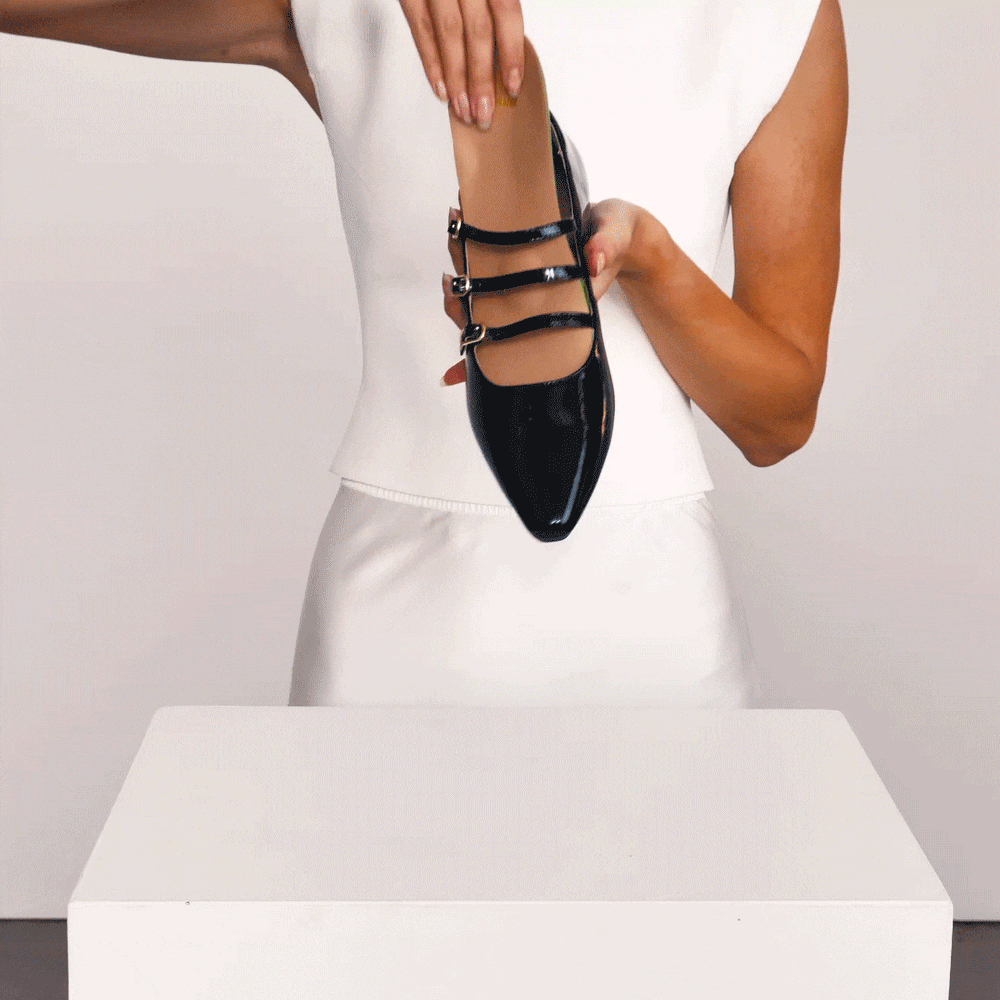A Podiatrist's Guide to Plantar Fasciitis & Shoes.
What is the Plantar Fascia?
The Plantar Fascia is a band of connective tissue that travels across the bottom of the foot, from the bottom of the heel to the base of the toes. Its role is to stabilise, absorb load and assist to stiffen the foot as it leaves the ground, allowing us to generate more power.
What is Plantar Fasciitis?
Plantar Fasciitis, also referred to as Plantar Fasciopathy or Plantar Heel Pain, is a swelling of the plantar fascia, often at its attachment into the heel bone. Sometimes a heel spur can be present, but this is not usually the cause of pain.


Symptoms of Plantar Fasciitis:
Symptoms can vary from sharp/shooting heel pain to a dull, throb or feeling bruised at the bottom of your heel. Pain can also extend into the arch of the foot. Pain typically occurs with first steps in the morning and after a period of non-weight bearing. It tends to worsen toward the end of the day.
Causes of Plantar Fasciitis:
- Increased demands of the Plantar Fascia; high-impact activities, an increase in or high BMI, prolonged standing on hard surfaces.
- Low arch or high arch profile.
- Reduced ankle joint flexion and/or calf tightness.
- Poor footwear; flat, thin soled, open-back, poor fixation.
Treatment for Plantar Fasciitis:
Footwear changes: Certain shoes can assist in offloading and reducing symptoms in the plantar fascia. Read on below to find out what to look for in footwear for Plantar Fasciitis
Load and activity management: The plantar fascia gets sore when the load placed upon it exceeds its tissue capacity. Reducing or altering your loads and the type of activity can help you stay active without stirring up your heel pain.
Taping: Taping is a short-term solution to provide pain relief. It works by supporting the affected tissue and temporarily reducing the load, as well as adding compression.
Strengthening: Strengthening of both the calf muscles and intrinsic foot muscles is essential to increase the tissue capacity of the plantar fascia and supporting musculature.
Stretching: In some cases where there is reduced range of motion at the ankle or calf tightness, stretching can help to relieve pain.
Orthotics: Insoles or inserts, referred to as orthotics, can help to redistribute pressure and optimise foot mechanics to reduce load through the plantar fascia. These can be prefabricated insoles that are off the shelf, or custom devices prescribed by your podiatrist or relevant health practitioner. They can be fashioned from dense or light foams, plastics, cork and other materials . Orthotics for plantar fasciitis may be used short term in acute cases, or long term in chronic cases.

Footwear for Plantar Fasciitis:
Plantar fasciitis symptoms are aggravated by overuse of the tissue, compression of the plantar fascia against the heel bone caused by lengthening or strain of the plantar fascia, or direction compression from loss of fat pad or cushioning. Wearing flat, thin-soled footwear will provoke heel pain, particularly if you have tight calves. Some shoes can assist in reducing load and compression through the plantar fascia.

Raised Heel Pitch
Slightly elevates the heel, reducing strain through the calf muscles and plantar fascia, along with reducing compression at the base of the heel. All Bared shoes have a minimum 12mm heel pitch.

Cushioned Midsole
Assists in providing shock absorption. We use high quality, natural rubber for durability and cushioning. Plus! Our biomechanical footbed provides additional cushioning throughout the midsole.

Firm Heel Counter
Assists in supporting the fat pad to provide cushioning to the insertion of the plantar fascia. Essential if you require an orthotic device. All of our fully-enclosed shoes and some sandal styles have a firm, mouldable heel counter. A shoe with an adjustable sling-back strap and a decent heel cup is a good compromise.

Heel Cup
Reduces splaying and shifting of the fat pad, to increase cushioning at the base of the heel. Our biomechanical footbed has a contoured heel cup which you’ll find in every pair.

Good Fixation
Your shoe should hold onto your foot to avoid toe-clawing. Your big-toe needs to extend for your plantar fascia to function efficiently. It’s for good reason we don’t make slides!

Steel Shank
Provides torsional stability and can help to reduce load through the Plantar Fascia. This can be found in all styles, apart from out Sanderlings and at Home ranges.

Arch Support
An arch support can often reduce load through the plantar fascia and provide cushioning. Some individuals will require a custom orthotic device depending on their foot shape and function. If a custom orthotic is not required our biomechanical footbed is a great place to start. It can also be modified by your podiatrist to help achieve individualised support.

Removable Insole
Essential if you require the use of custom orthotics to ensure enough depth in the shoe, or if you require additional heel raises or padding. Our footbed can be removed from most fully-enclosed styles.
Related Articles
Wide Feet | Narrow Feet | Shoes For Foot Pain | Shoes for Orthotics | Plantar Fasciitis & Footwear | Bunions & Shoes





























